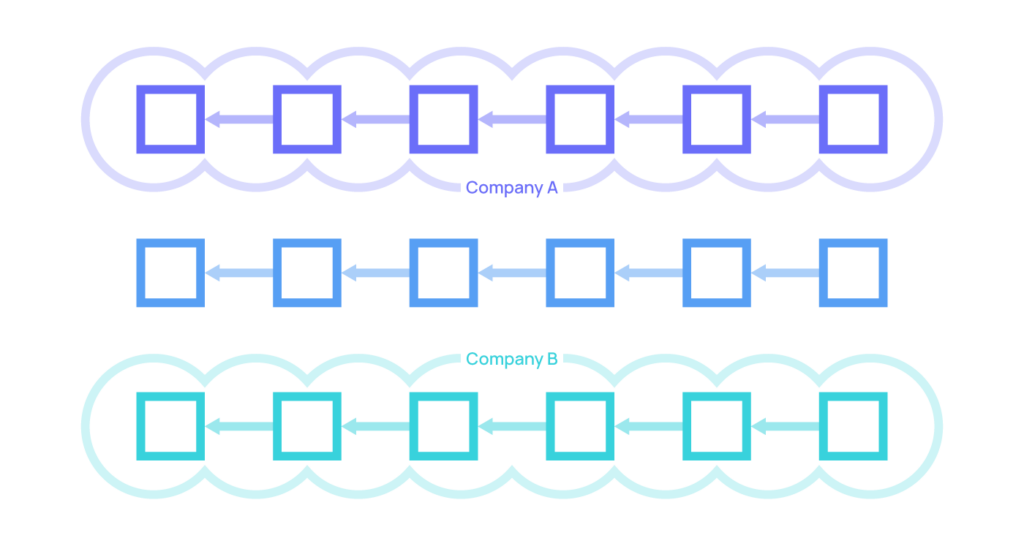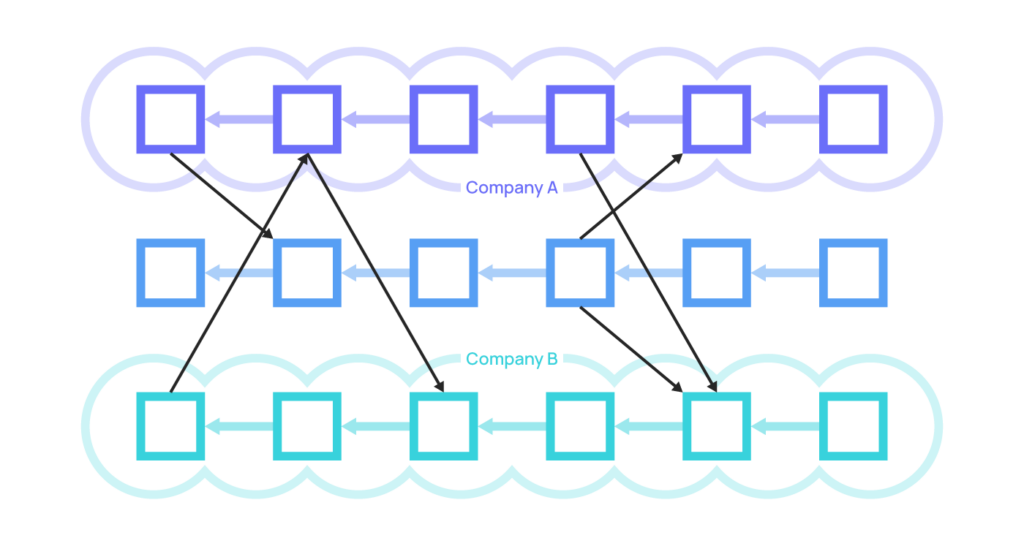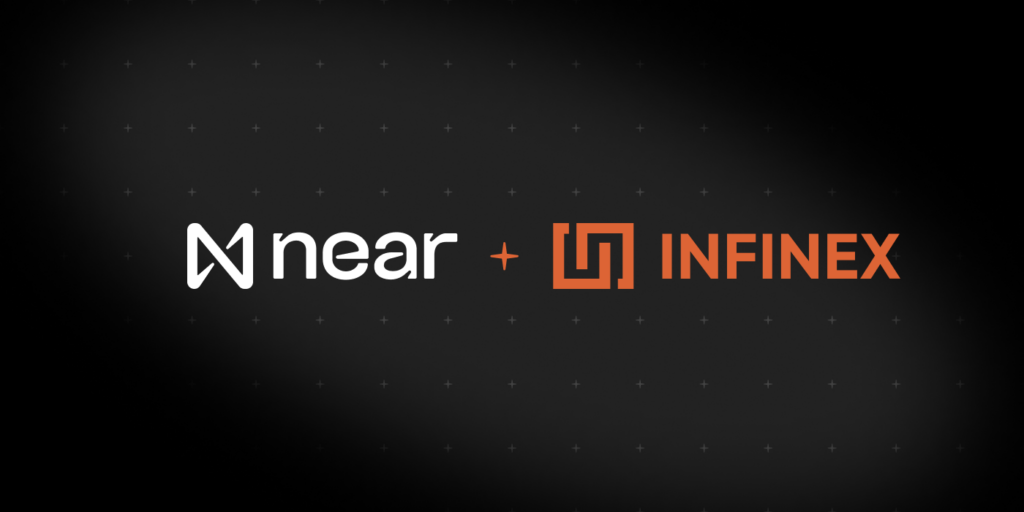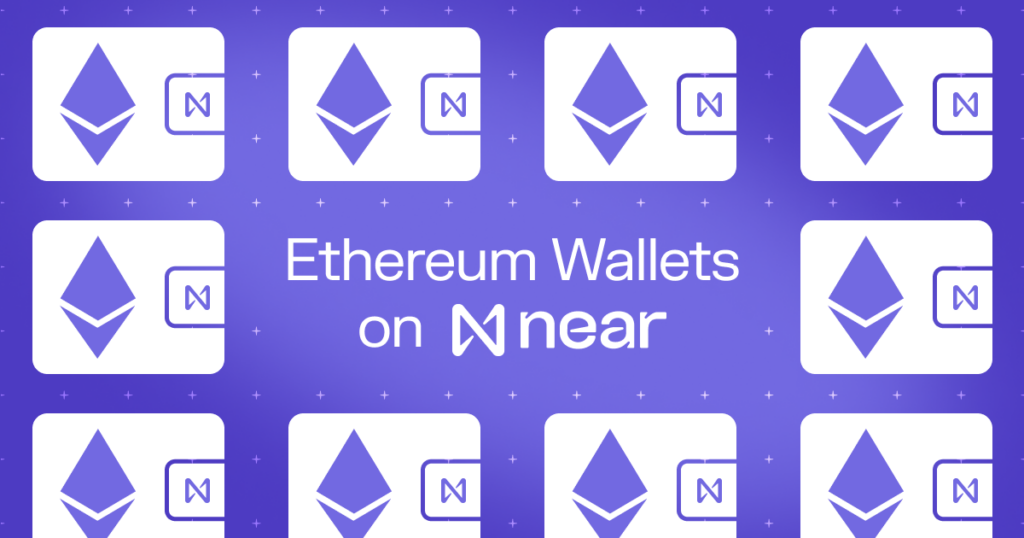NEAR’s Private Shard: Infrastructure for Enterprise, Built on the Open Web
For business, privacy is important. Whether it be the transfer of confidential information to partners, or protecting customers’ data. Blockchain has privacy baked into its DNA. But attempts at bringing enterprise and blockchain together have struggled.
Historically, businesses approached the ground-breaking technology by adopting the consortium model. Company A would invite its partners or companies in the same ecosystem to build a blockchain. But almost as soon as these consortiums started, they ran into issues.
Privacy is baked into blockchain’s DNA, but businesses have struggled to harness its potential.
Concerns around control and access merged with the headache of trying to move data from one company’s IT systems – often built on legacy software – to the blockchain in a way that could be interpreted by another company’s proprietary software. Then you have the thorny issue of throughput, fees and other associated costs with writing and storing data on the blockchain.
This is an issue we at NEAR have been thinking about deeply, and we believe we have the perfect solution to help enterprises embrace blockchain and the Open Web. We call it Private Shards.
Private Shards: Blending the public and private seamlessly and securely
Since the inception of NEAR, it was always designed to be a sharded network: an interconnected global system of users, businesses, and infrastructure providers. As part of NEAR’s design is the ability to partition shards to suit different use cases.

For example, a hospital’s medical data, information on students at a university, or sensitive manufacturing data. All of these datasets have different requirements and needs. On NEAR, a private shard can be created to suit all of these needs, without the need for each of those businesses to build a blockchain from scratch.
In the consortium model, each of those use cases would need a separate system that catered for the different requirements. Not on NEAR.
The NEAR blockchain gives enterprises the ability to build private shards that can still be connected to the public blockchain. Why would a business want such a feature? Let’s look at the use cases above.
Let’s say a hospital housed its records on a private shard, but a patient gets sick overseas and a doctor needs access to his or her records. On NEAR, a doctor – whose identity could be publicly verifiable – could make a request to the private shard for access to those files simply, and securely.
In the factory example, there are aspects of manufacturing that need to be private, but then there are other aspects that need to be public. Let’s say a customer wants to know when a product has been built and shipped. A private shard could publish that data to the public blockchain seamlessly.
In order for mass adoption to occur, blockchain needs to be able to blend the public and the private seamlessly, but safely. Private Shards are NEAR’s solution to that challenge, and it’s as simple as starting a node on AWS or AliCloud. Let’s explore how.
How do Private Shards work?
Given private shards operate as a shard on the NEAR network, it means that public chain contracts can call into private shard contracts and vice versa.
This is done via the same mechanism that handles cross-shard routing, which is completely transparent to the users and developers and doesn’t require any additional work (public contracts don’t even need to know they are interacting with private ones). Let’s look at a use case: Two private shards want to interact with each other without routing through public shards, how is this achieved? The shared identity space.

Each private shard gets its own name, similar to domains on the web. For example, if University of Berkeley and Tencent are using this system, they will have “berkeley.edu” and “tencent.com” accounts.
Inside their private shards, specific applications will then have a sub-account, for example, if both of them are using some application to track ownership of real estate: “properties.berkeley.edu” and “properties.tencent.edu”. Selling a property between these two entities then would require a cross private shard transaction with potential public chain settlement later if later this information needs to be proven to the public parties.
Applications that these companies use will be built exactly the same as other applications on NEAR: smart contracts are built in Rust or Typescript. This allows creators to build frontends that can interact with these smart contracts, including sending cross-private and public shard transactions.
NEAR’s mission has been to bridge the gap between the internet of today and the blockchains that will power the future. There is already a company actively working on this solution – Calimero’s Private Shards.
Private Shards is a core part of that mission. It helps create an ecosystem where businesses, users, and partners can interact, and we invite anyone to join us in that mission to create a more open, and inclusive web.
Share this:
Join the community:
Follow NEAR:
More posts from our blog



